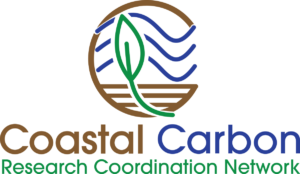 Researchers from the Smithsonian Environmental Research Center (SERC) were recently awarded a Research Coordination Network (RCN) grant from the National Science Foundation with the goal of accelerating the pace of discovery in coastal carbon science by serving a community of researchers and practitioners with data, tools, and synthesis.
Researchers from the Smithsonian Environmental Research Center (SERC) were recently awarded a Research Coordination Network (RCN) grant from the National Science Foundation with the goal of accelerating the pace of discovery in coastal carbon science by serving a community of researchers and practitioners with data, tools, and synthesis.
Tidal marshes, mangrove swamps, and seagrass meadows collectively form some of the Earth’s most productive ecosystems. In addition to providing safety and food for some popular inhabitants such as crabs, fish, and birds, coastal wetlands have the capacity to bury carbon, forming new soil mass as plants and soils respond dynamically to sea-level rise. This unique carbon burial capacity has received recent attention since money from carbon markets could potentially be used to mitigate the cost of restoration efforts, as well as incentivize wetland preservation in countries outside the U.S.
However, our understanding of coastal wetlands as a carbon sink is far from complete. Wetlands can also be a source of emissions when soils are eroded, disturbed due to development, or drained for agriculture. Freshwater tidal wetlands can emit methane, a more potent greenhouse gas than carbon dioxide. Currently, new data on carbon stocks in soils and plants, burial rates, and carbon losses are being generated faster than can be synthesized and interpreted at a global or even national scale. The pace of data generation is only expected to quicken.
The Coastal Carbon RCN is poised to take on the many challenges in the developing field of ‘Blue Carbon’ science and practice. Planned outreach activities include teaching researchers field methods, data management and analytics via YouTube videos, webinars, and individual consultations. The Coastal Carbon RCN will also improve access to data by hosting open online literature reviews, web-based modeling tools, and a database of over 1,500 soil carbon profiles. In the coming years, the Coastal Carbon RCN will also host a series of targeted meetings with the goal of generating high-level and scientifically groundbreaking synthetic research products. Importantly, the structure and goals of the Coastal Carbon RCN will be flexible, responding to community input.
In December 2017 the Coastal Carbon RCN made two major strides, first with the posting of an extensive online dataset, a literature review of coastal carbon data properties, developed in preparation for the next version of the U.S. National Greenhouse Gas Inventory. They also had an official ‘kick off’ Town Hall at the American Geophysical Union’s Fall meeting to introduce the network and get feedback from a diverse community of end-users.
If you want to be involved in the Coastal Carbon RCN you have a few options. You could share your thoughts via a digital community survey, follow on twitter @CoastalCarbon, email CoastalCarbon@si.edu, or check the website regularly for updates.
